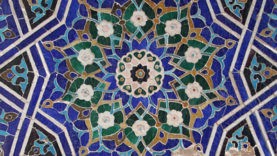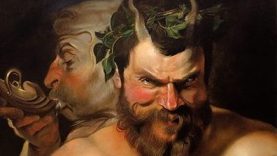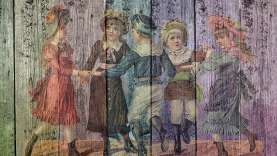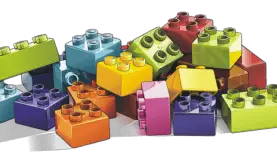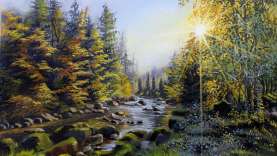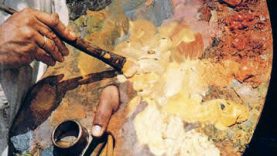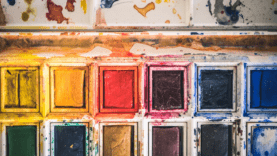
6 Amazing Tips To Mix Color Palettes And Bring Natural Vibe Into Your Paintings
Are you tired of your paintings looking flat and lifeless? Do you want to add some natural-looking depth and complexity to your art?
In this article, you’ll learn expert tips and tricks for mixing different color palettes to bring a natural vibe into your painting.
Think of it as a recipe for the perfect painting – a pinch of this color, a dash of that one, and voila! You’ll be able to capture the beauty and intricacy of the natural world in your artwork.
So, grab your brushes and get ready to unleash your inner artist.
What Is The Color Theory?
Color theory is like a painter’s palette, guiding artists and designers in selecting and blending hues to create stunning compositions. It explores the science and psychology of color and how we perceive it in different contexts.
For instance, if you’re starting to understand brown color, you can begin by watching a tutorial on how to mix brown colors.
A tutorial can offer a practical guide to mixing various shades of brown using primary colors. It can also demonstrate how color theory is applied in real-world scenarios.
With this foundational knowledge, you can unleash your creativity and bring your ideas to life with a new level of vibrancy and depth.
What Is The Color Wheel?
The color wheel is a circular diagram that displays the primary, secondary, and tertiary colors in a visually organized way. This tool shows the relationships between different colors and their variations.
It makes it more accessible for artists and designers to select and combine colors harmoniously.
The Three Primary Colors: Yellow, Red, and Blue
The color wheel starts with three primary colors: yellow, red, and blue. These colors cannot be created by mixing other colors and are the building blocks of all colors.
Mixing Primary Colors To Create Secondary Colors
Mixing two primary colors allows you to create secondary colors: orange, green, and purple.
- Orange is made by combining yellow and red.
- Green is made by mixing blue and yellow.
- Purple is formed by combining blue and red.
Tertiary Colors: The In-Between Shades
You can mix a primary color with a secondary one, giving you a tertiary color. This results in shades such as yellow-green, red-purple, and blue-green.
These in-between colors allow for even more variation and nuance in color schemes.
Using The Color Wheel To Create Harmonious Color Schemes
After understanding the basics of the color wheel, you can use it to create harmonious color schemes for any project.
- One popular method is the “analogous” color scheme, which involves selecting colors adjacent to each other on the color wheel. It creates a cohesive and calming effect, perfect for soothing spaces like bedrooms or bathrooms.
- Another option is the “complementary” color scheme, which involves selecting colors opposite each other on the color wheel. It creates a high-contrast and energetic effect, perfect for attention-grabbing projects like logos or advertisements.
Types Of Color Palettes
Color palettes are vital in any design project, whether creating a website, designing a logo, or working on an art piece. They set the mood and tone of your project, making it visually appealing and memorable.
But with so many colors available, choosing the right ones for your project can be overwhelming. That’s where color palettes come in!
There are four main types of color palettes.
1. Monochromatic Palettes: Simplistic Yet Sophisticated
The monochromatic palette is your best choice if you want a simple but classy color palette. As the name implies, it comprises different shades of the same color.
For example, you could use different shades of blue, from light to dark, to make a design that flows well and looks good. Monochromatic palettes are perfect for creating a clean, minimalist, easy-on-the-eyes look.
2. Analogous Palettes: Harmony In Hues
Analogous color palettes involve using colors close to one another on the color wheel. These colors usually share a similar hue, making them ideal for creating a sense of harmony and unity in your design.
For example, a green and yellow palette or a blue and purple palette can create a calming effect, while a red and orange palette can evoke warmth and energy.
3. Complementary Palettes: Bold And Vibrant
Complementary color palettes involve using colors on opposite sides of one another on the color wheel. These colors contrast strongly, making them perfect for creating a bold and vibrant design.
For instance, a red and green palette or a purple and yellow palette can create an eye-catching and memorable design.
4. Triadic Palettes: Balanced And Dynamic
These color palettes include using three evenly spaced colors on the color wheel. These colors have a balanced and dynamic effect. It makes them perfect for creating a visually appealing, simple, manageable design.
For example, a red, blue, and yellow palette or a green, orange, and purple palette can create a fun and playful design.
Tips To Mix Different Color Palettes To Bring The Natural Vibe Into Your Painting
One of the best ways to bring the beauty of nature into your paintings is by learning how to mix and apply color palettes to your design.
By mixing different colors, you can make stunning and realistic artwork that grasps the essence of the natural world. Here are some tips to get you started:
Use Nature As Your Guide
Nature is an excellent source of inspiration for color palettes. Take a walk in the woods or visit a nearby park and observe the colors around you.
Notice how the leaves on the trees change colors throughout the year or how the sunsets create a beautiful gradient of oranges, pinks, and purples.
Use these natural color combinations to guide your painting and bring a sense of authenticity to your work.
Embrace The Power Of Contrast
When it comes to mixing color palettes, contrast is your best friend. You may combine warm and cool colors or light and dark shades to create a natural vibe.
For example, pairing a warm yellow with a cool blue or a light green with a dark brown can add depth and dimension to your painting. Feel free to experiment with different combinations to find the perfect balance.
Play With Complementary Colors
Complementary colors are pairs of opposite colors on the color wheel, such as red and green, blue and orange, or yellow and purple.
When used together, they can create a vibrant and dynamic color palette. You can experiment with these combinations to make a bold and eye-catching painting.
Experiment With Texture
Texture can add another layer of interest to your painting. You may mix colors with different finishes, such as matte, glossy, or metallic, to create a varied and textured effect.
For example, a matte green with a glossy brown can create the illusion of tree bark, while mixing metallic gold with a deep blue can create a celestial effect.
Use A Color Scheme Generator
Try using a color scheme generator if you need help or are more inspired. Some popular options include Adobe Color and Canva Color.
These tools can help you choose complementary, analogous, or triadic colors that work well together.
Let Your Imagination Run Wild
Painting is all about creativity and self-expression. Don’t be afraid to let your imagination run wild and experiment with different color palettes.
Mix and match colors you wouldn’t usually pair, and see where it takes you. You might discover a unique style that sets your paintings apart.
If you want to learn more about improving your drawing skills, check out this comprehensive guide on how to get better at drawing.
FAQs
1. What is a color palette in a painting?
A color palette in painting refers to a range of colors an artist selects. It may be a specific set of colors or a more general theme of colors that the artist chooses to work with.
2. How can I mix different color palettes effectively?
To mix different color palettes effectively, you should start by selecting a dominant color palette that will be the foundation of your painting.
Then, you can add accents of other color palettes that complement or contrast with the dominant palette.
3. Should I mix my colors in a specific order?
There’s no set order for mixing colors, but it’s generally a good idea to start with lighter colors and gradually add darker ones. This allows you to control the intensity of the colors and avoid making the painting too dark too quickly.
Wrapping Up
You’ve now explored the tips and tricks to mix different color palettes. These tips will bring a natural vibe to your paintings.
Remember, nature is the ultimate muse, so let it guide you as you mix and blend different palettes. And remember to have fun along the way! Painting is all about expressing yourself, experimenting, and having a blast.
So, whether you’re a seasoned artist or a beginner, let these tips and your imagination take you on a colorful adventure.



